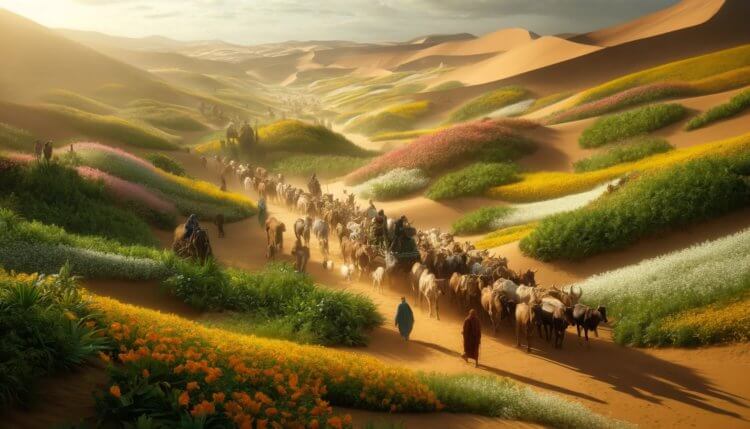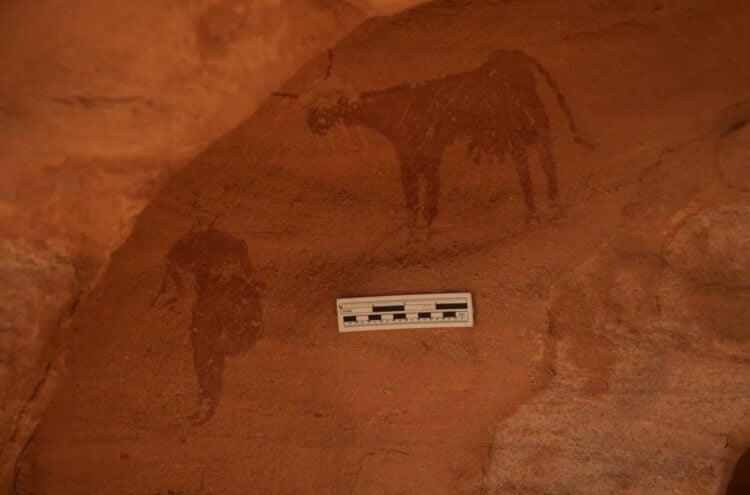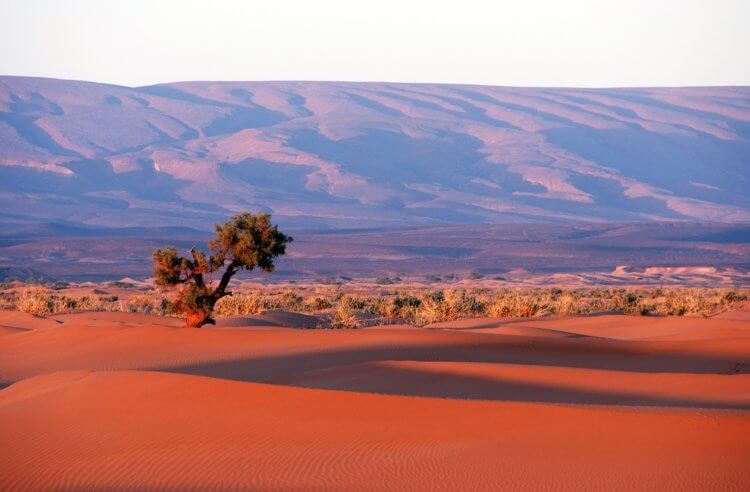Today the Sahara is one of the largest and most famous deserts in the world. During the day, the temperature in this part of our planet can rise to 50 degrees Celsius, and at night it drops to 25 degrees. All living organisms in the Sahara Desert have long adapted to extreme conditions with low rainfall. Many species of snakes, lizards and scorpions live there. In most cases, they survive due to the fact that they are nocturnal and do not get out of their shelters in the scorching daytime sun. Of the people in the Sahara Desert, you can only findBedouins – they are a nomadic people who move from place to place in search of pastures for their livestock. Recently, scientists found cave paintings that once again proved that thousands of years ago the Sahara Desert was a more pleasant place to live.

Once upon a time, the Sahara Desert could have looked like this, or maybe better
Rock paintings in the Sahara Desert
Drawings of ancient people were found in the Etbay mountain range, which is located about 250 kilometers from Sugars. Despite the rather distant distance, the climate in these two places is approximately the same – now it is very hot and dry there, so that most animals are simply not able to survive there.
Recently, an article appeared in the scientific journal The Journal of Egyptian Archeology that scientists found drawings of ancient people on one of the rocks. According to their calculations, they were made by artists who lived in the vicinity of the Sahara Desert approximately 4,000 years ago. In total, the researchers counted 16 drawings depicting people, cattle, antelopes, elephants and giraffes.

Rock painting of man and cattle in the Sahara. Image source: IFL Science
Based on this, the authors of the scientific article suggested that relatively recently the Sahara Desert was a more vibrant place with fertile land, pastures and an abundance of various animals. Today, near the Etbay ridge, as in the Sahara Desert, there is almost no rain, which makes cattle breeding impossible. But 3-4 thousand years ago, this may have been the main activity of the local inhabitants.
It was surprising to find cattle depicted on rocks in the desert, since they require a lot of water and acres of grassland, and it would not survive in today's dry Sahara environment, said researcher Julien Cooper, project manager of the Atbai Survey.
Why the Sahara was not a desert before
Cave paintings of cattle provide compelling evidence that the Sahara Desert once looked completely different from what it does today. It is believed that between 15,000 and 5,000 years ago, monsoon rains occurred frequently in Africa – they may have occurred due to periodic changes in the Earth's orbit around the Sun. Thanks to rainfall, the African continent could become covered with plants and become a lush land with freshwater lakes.

This is what the Etbay region looks like today. Source Photos: IFL Science
However, a couple of thousand years ago the rainy season ended, and the Sahara became a desert area. Its area is 8.6 million kilometers, that is, it is truly a huge territory. When it became lifeless, people apparently abandoned the area. Who is the descendant of the ancient people who painted dozens of drawings on the rock walls is unknown, and the answer to this question is unlikely to ever be given.
Read also:The mystery of Libyan glass, a mysterious material found in the Sahara Desert, has been solved
How the Earth will change in the future
However, in the future the appearance of the Sahara Desert may change again – it has a chance of becoming flourishing again place. Scientists believe that this will happen in about 12,000 years, when the angle of our planet will again change to such an extent that it could greatly affect the climate.

The Sahara Desert is not suitable for a quiet life. Photo source: rtraveler.ru
The Sahara Desert is already not as empty as it might seem at first glance. Several years ago, scientists studied satellite images and found that 1.8 billion trees grow on its territory. Moreover, we are not talking about some dried driftwood, but completely healthy plants. They must be extracting water from the depths of the earth, penetrating there with the help of their long roots.
Our Telegram channel publishes posts that you will never find on the site. Let's go read!
So, if everything goes well and humanity does not allow climate disasters, in the future our distant descendants will go to the Sahara on vacation. If extinction is prevented, antelopes, elephants, giraffes and other living creatures that were depicted on the rocks in the Etbay mountain range may once again find a home there.